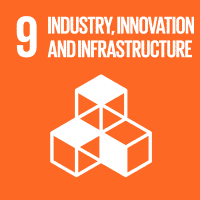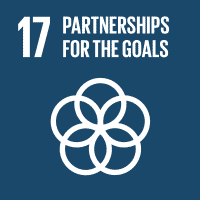GIZ has put together a package of projects to help link job creation to climate change mitigation. These include: Career Path Development for Employment (CPD4E), an initiative commissioned by the German Federal Ministry for Economic Cooperation and Development (BMZ) and cofinanced by the Swiss State Secretariat for Economic Affairs (SECO); Digital Skills for Jobs and Income II; and Support to the Initiative for Youth Employment (S2PYEI). In this way, we are helping South Africa on its journey to creating a just, decarbonised society.
Training for South Africa’s energy transition
South Africa and its energy transition: a journey to the Western Cape shows how young people are being integrated into efforts to transform the energy sector.
Edward Lee confidently talks his fellow trainees through the components that make up a solar panel. There is a real one in the classroom, but for now, the 24-year-old is focused on a drawing showing the inner workings of a solar panel, with all their various connections and functions. Theory comes before practice. Lee is one of a group of young people in the town of Vredenburg, South Africa, training to become electricians and photovoltaic specialists.
Vredenburg lies approximately 130 kilometres north-west of Cape Town and is home to some 40,000 people. The South African Government plans to turn the Saldanha Bay region into a major energy hub for the country in the future. Skilled workers will be key to the success of this project, which is good news, given the 45.5 per cent youth unemployment rate in South Africa.
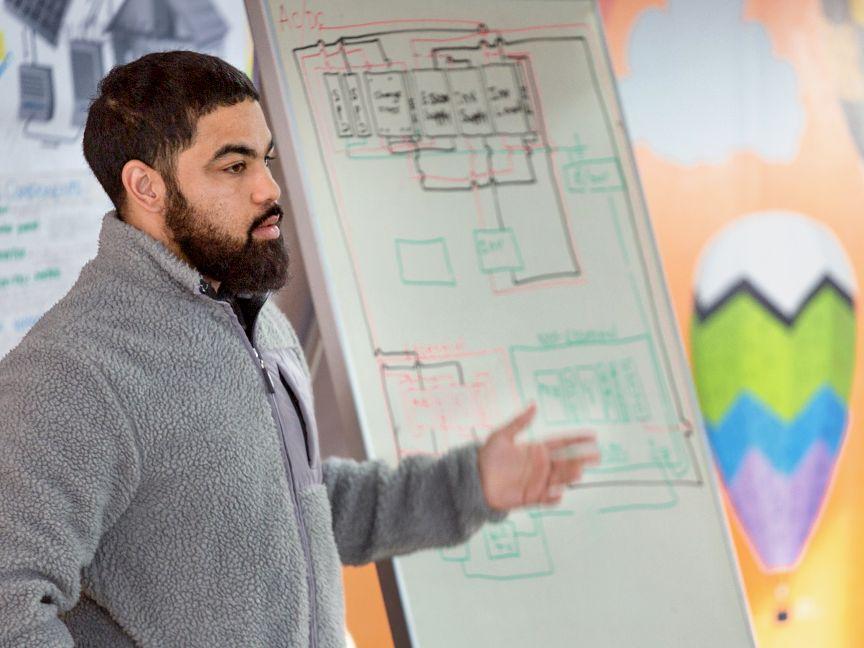 Jesse David Preyser
Jesse David Preyser
Edward Lee in class
‘It’s not easy to get a job here if you don’t have any professional experience or expertise,’ says Edward Lee after class. Because of this, the opportunity to acquire specialist knowledge at the training centre in Vredenburg is incredibly valuable to him. The Deutsche Gesellschaft für Internationale Zusammenarbeit (GIZ) GmbH is working on behalf of the German Federal Ministry for Economic Cooperation and Development (BMZ) and the Swiss State Secretariat for Economic Affairs (SECO) to help train young South Africans in partnership with the South African organisation Yes4Youth.
‘Our goal is to take young women and men and, in the space of 12 months, provide them with all the knowledge they need to work in any sector of relevance to South Africa’s energy transition,’ says Allison van der Walt from Yes4Youth. She and her colleagues have high ambitions, aware of the vital role that the next generation will play in South Africa’s economic and social development.
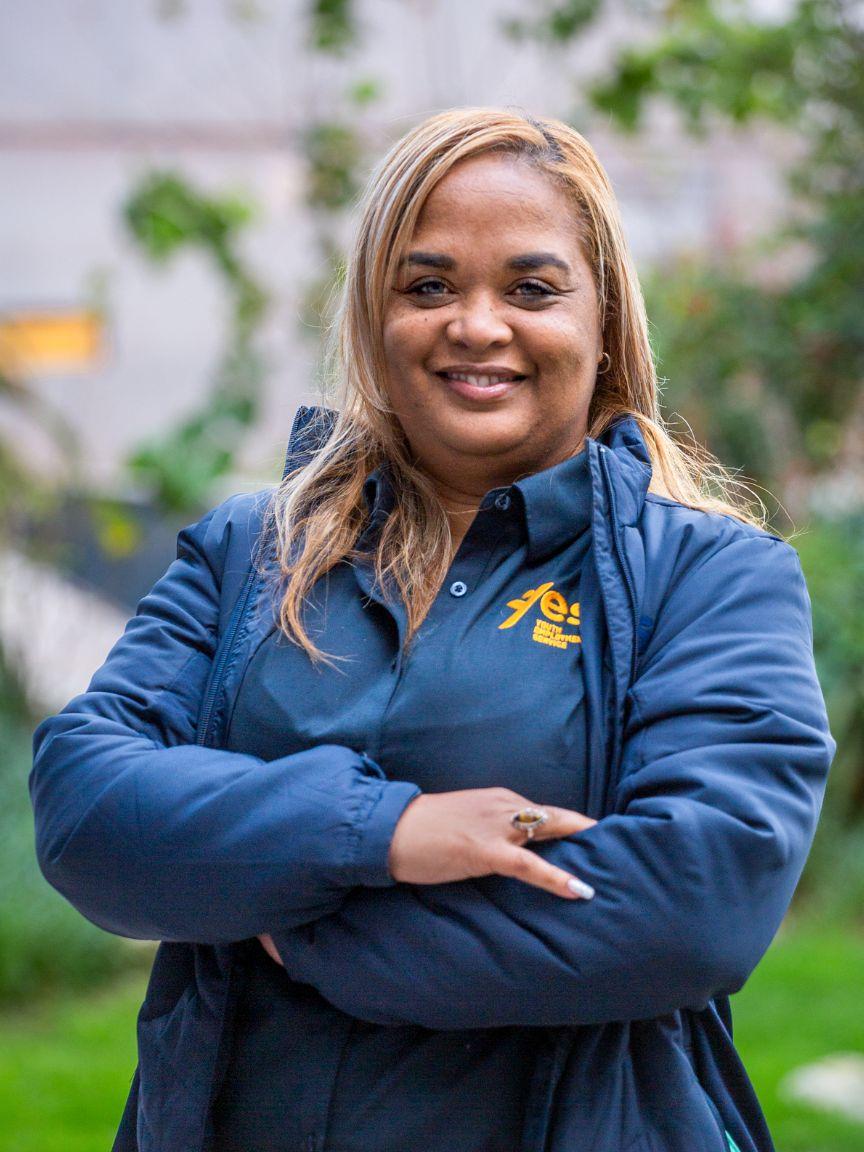 Jesse David Preyser
Jesse David Preyser
Allison van der Walt from the Yes4Youth organisation
Energy crisis dictates daily life
Africa’s southernmost country has been in the grips of an energy crisis for over 17 years. With an outdated energy system, a lack of maintenance work and growing demand for energy, power grids have become overloaded. Load shedding has been employed to manage the situation. This involves intentionally shutting off the electricity supply for several hours at a time.
These blackouts are part of people’s daily lives in many places and make it particularly difficult for small businesses to operate. Small enterprises often lack the funds to purchase alternative sources of power, such as generators. ‘My mother had a fish shop that sold takeaway fish and chips, but she had to stop preparing them every time there was a power outage,’ says Edward Lee. As he points out, if you are unable to sell your products, you cannot make a living. Lee explains that, like for many others, there came a point at which his mother could no longer keep her business going.
The dramatic energy crisis and its consequences are forcing South Africa to transform its energy policy. The goal is to achieve a just energy transition (JET) that is also green. By switching to alternative and greener sources of energy, such as wind and solar power, and employing cutting-edge technology such as green hydrogen, the South African Government intends to master the energy crisis and reposition the country with a more sustainable and environmentally friendly energy infrastructure.
South Africa aims to go climate-neutral, making the leap from a coal-based to a renewable energy supply, by 2050. At present, the country’s energy sector is still largely dependent on burning coal, an environmentally harmful practice that has left South Africa with some of the highest levels of particulate air pollution in the world.
Just energy transition
What does the term ‘just energy transition’ mean? The word ‘transition’ describes a gradual switch-over to low-carbon technologies. The word ‘just’ denotes the need for this transition to avoid any negative impact on society, jobs and livelihoods. In other words, it is not simply about switching from coal and oil to renewable energy, but also about making the transition fair and inclusive for all.
Sustainability and social responsibility
A Just Energy Transition Partnership (JETP) has been established to support South Africa in realising its plans. Funding for the partnership comes from Germany, France, the UK, the Netherlands, Denmark, the US, the EU, and several development banks. March 2024 also saw the South African National Assembly adopt the Electricity Regulation Amendment Act, which is designed to reshape the country’s electricity sector. Currently, the state-owned electricity utility Eskom still holds a monopoly in the industry. The legislative reform is intended to open the door for independent energy suppliers to enter the market. GIZ is also advising the country on energy market reforms. The overall picture is of South Africa undergoing a major change on several fronts, including a significant upsurge in renewables.
According to Patrick Lakabane, Management Team member at Freeport Saldanha, when it comes to these kinds of ambitious projects, it is important to bring the public on board. Freeport Saldanha is a special economic zone with the deepest natural port in South Africa. Lakabane believes the energy transition offers tremendous opportunities for his home region. The Port of Saldanha Bay is still surrounded by broad, open fields with the wind whistling over them. In the future, this land directly adjacent to the Atlantic coast is set to be used for building wind and solar farms. Saldanha’s infrastructure (deep-water port, road and rail connections) and plentiful wind and sunshine also make the region an attractive location for green hydrogen production.
 Jesse David Preyser
Jesse David Preyser
‘Cautiously optimistic’
Dr Aalia Cassim of South Africa’s National Treasury on progress and challenges on the road to a green energy future.
more in the akzente interview
 Jesse David Preyser
Jesse David Preyser
Patrick Lakabane, Manager at Freeport Saldanha
Job creation
Training programmes such as those offered by Yes4Youth in Vredenburg are helping to train and equip people from local communities to play a key role in South Africa’s energy transition. ‘We want to advise young people on their career choices and show them the opportunities on offer locally in this region,’ Lakabane stresses. To this end, the Freeport team also goes into schools to encourage students to consider a career in the energy sector.
Focused on people
Thelma Hine, a teacher with Yes4Youth, knows just how urgently these fresh job prospects are needed: ‘Many of the young people in our programme come from difficult backgrounds. Making their own decisions and being able to realise their dreams is a new and incredibly valuable experience for them.’ The aim of the programme is of course to equip young people well for their future careers, ‘but there’s more to it than that,’ she says. ‘We are focused on people.’ And this means that sometimes trainees opt for another career path in a completely different sector.
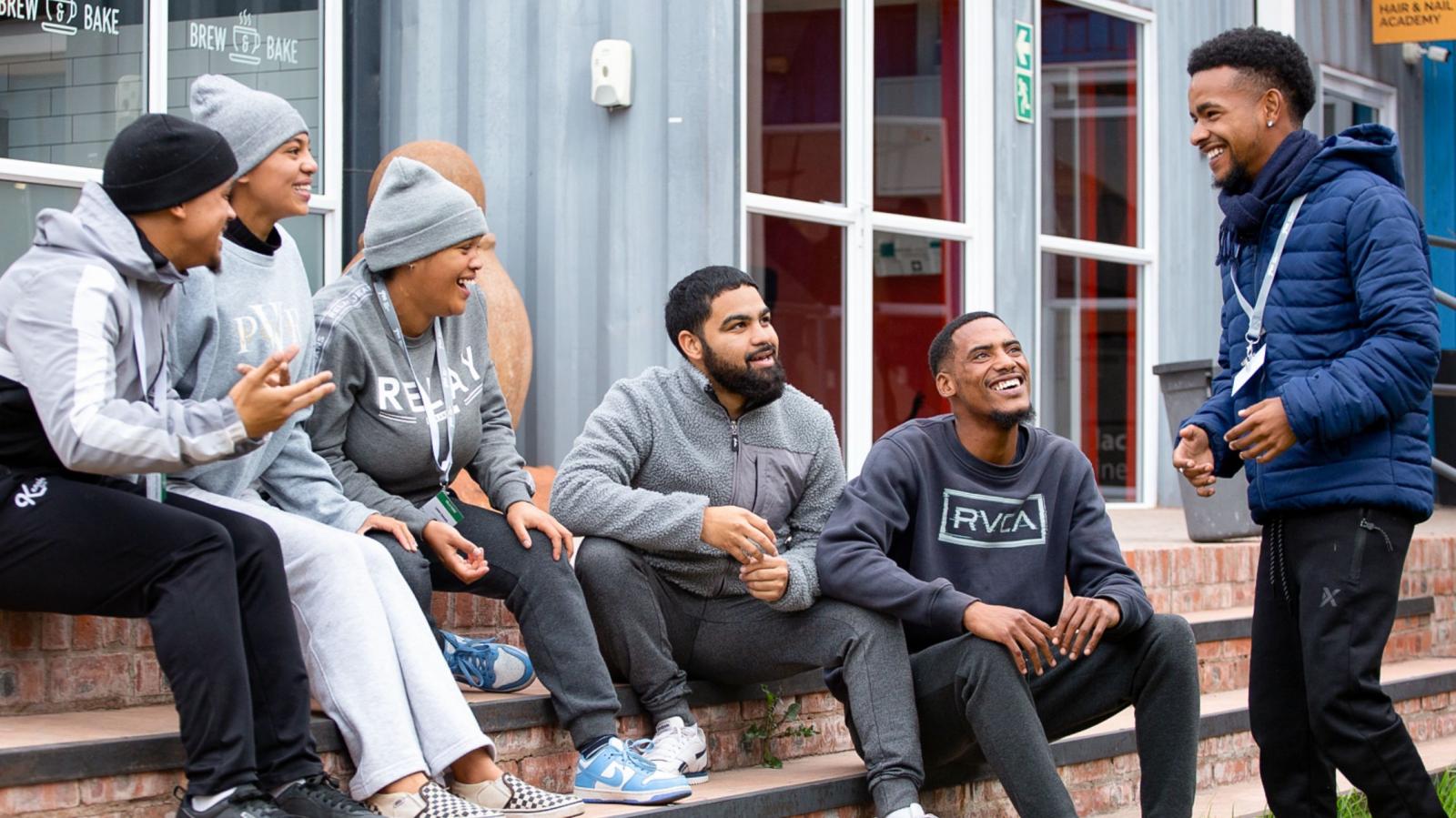 Jesse David Preyser
Jesse David Preyser
Trainees such as 18-year-old Brogan Smith. ‘I wasn’t sure whether the solar programme was right for me. During the fire and safety drills I realised fire safety itself was the thing that fascinated me.’ Smith now plans to apply for a career in the fire service. ‘When I joined the training programme, I barely had any self-confidence, but now I’ve learned to believe in myself,’ she explains.
South Africa is at a turning point. As Edward Lee, Brogan Smith and all their fellow trainees prepare for their future careers, they also reflect the larger transformation taking place throughout the country. There is more at stake here than simply overcoming an energy crisis; it is also about building a society that is sustainable, just and forward-looking.
Supporting the energy transition
GIZ has a broad portfolio of projects that support the just energy transition in South Africa:
South African-German Energy Programme (SAGEN), commissioned by BMZ and cofinanced by SECO, contact: Lilian Laurisch
South African-German Energy Programme – Capacities for the Energy Transition (SAGEN-CET), commissioned by BMZ, contact: Anna-Maria Heisig
Promoting the Development of a Green Hydrogen Sector in South Africa (H2.SA), commissioned by BMZ, contact: Rebekka Hilz-D’bichi
Enabling Long-Term Decarbonisation Pathways for Power-to-X, commissioned by the German Federal Ministry for Economic Affairs and Climate Action (BMWK) through the International Climate Initiative (IKI), contact: Alexander Mahler
Just Transition to a Decarbonised Economy for South (JUST SA) commissioned by BMWK, contakt: Christina von Heyden


